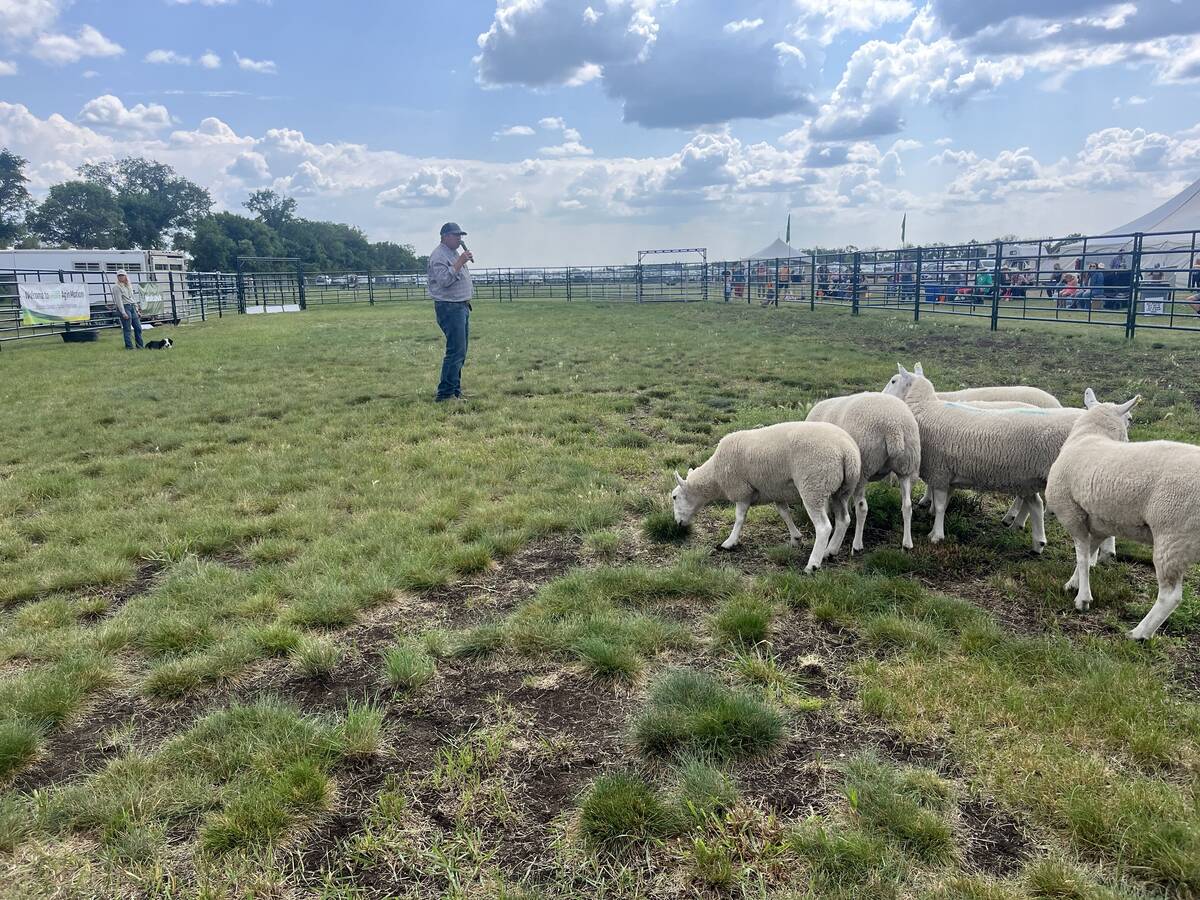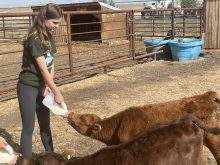With a little bit of money, Montana has kept more of its youth at home
on farms and ranches.
During a Saskatoon Chamber of Commerce conference on Oct. 29, state
agricultural official Sam Antoniuk outlined the program that is helping
keep rural Montana populated with a new generation of producers.
He said the United States government turned over $700,000 US to the
state 30 years ago that was used to fund a loan program to help
children and young people get started in agriculture.
Read Also

Stock dogs show off herding skills at Ag in Motion
Stock dogs draw a crowd at Ag in Motion. Border collies and other herding breeds are well known for the work they do on the farm.
Youth as young as nine are loaned up to $3,500 to invest in farming –
usually by buying bred cattle. Older children aged 12-21 can borrow a
maximum of $8,500. They must pay the loan within five years.
Antoniuk is in charge of the program and he said it has definitely kept
young people in the state.
Better yet, the youth are honest, with a loan default rate of one to
two percent. Meanwhile, the fund has built up over the years to $3
million.
This year there are 127 active loans with interest rates of seven
percent.
The junior agricultural loan program requires a community-based panel
of three people to approve the plans and supervise the youth.
Antoniuk inspects each project twice a year and the department takes a
lien on the cattle or other assets purchased.
“One day these kids will be weaned from us to a financial institution,”
Antoniuk said. “You want to get them comfortable with going to the
bank.”
The state operates a larger program for those 18 or older. To borrow up
to $35,000 from the state under the rural assistance loan, applicants
must have a viable business plan, a net worth of $100,000 and have been
turned down by other financial institutions. A community mentor, such
as a local rancher, and the local county extension agent must oversee
the plan and how it unfolds. There are 53 loans under the program this
year.
Since 1989, almost 1,000 children and adults have had one of these
loans. Most are located in the eastern half of Montana, where most of
the agricultural land is located.
Antoniuk said the other success has been promotion of these loans by
the school system’s agricultural education teachers. Many students
learn about the loan in their ag ed classes.
Antoniuk said the most successful applicant was a boy who used his loan
to start a seed cleaning business that is now a multimillion dollar
enterprise. While any youth can apply for the loans, they must have
access to feed, water and pasture for the animals they buy. That is why
the program prefers to work with 4-H members or those belonging to the
Future Farmers of America club.
Antoniuk said Montana’s four-year drought has led to some hesitancy in
obtaining loans, but he still sees value in the program because “few
Montana families can afford to set up their kids in farming.”
After studying the Montana program last year, the Saskatchewan
Federation of Indian Nations is setting up a pilot loan program that is
similar.
This year, about 20 Indian young people will get up to $9,000 to buy
bred cows. They must supply cash equal to 10 percent of the amount they
want to borrow. They can also get a federal grant equal to 40 percent
and so will only have to repay half the total amount.
Youth interested in the program can contact the Saskatchewan Indian
Equity Foundation in Saskatoon at 306-955-4550.
Ken Bear, the SFIN’s agrologist, told the conference that Indians own
or control 1.6 million acres of arable land in Saskatchewan.
However, 80 percent of it is rented to non-Indian farmers. The SFIN has
a 20-year plan to train young people how to be farmers so that they can
use that land.
University of Saskatchewan professor Tom Allen said the Indians’
agricultural effort should not be ignored, because as a group they are
the largest landowner in the province and will become the biggest
supplier of labour for farms. As an example he cited the Blood Indian
tribe in southern Alberta, which is shipping compressed timothy hay to
Japan grown on the reserve’s irrigated land.
In other examples, he pointed to the Muskaday reserve in Saskatchewan
that is in its third year growing potatoes, and a joint venture on an
Osoyoos, B.C., reserve that is working with a vintner to grow grapes.
Allen said while traditional crops bring thin margins, there is
financial opportunity in value-added agriculture such as vegetables.
















